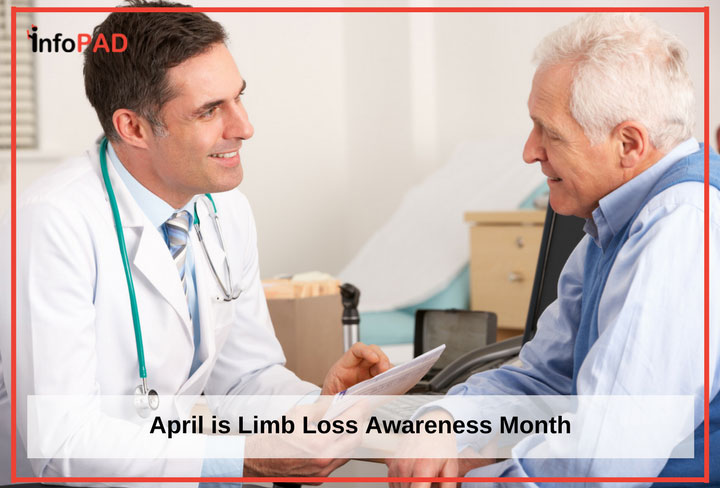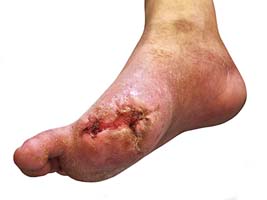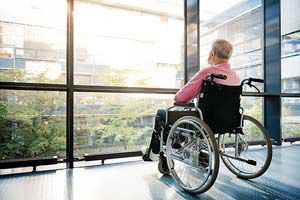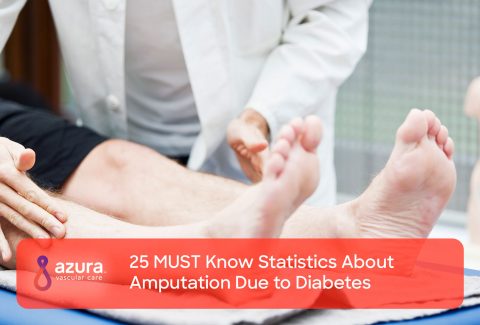
Limb Loss Awareness Month helps bring attention to the growing number of those living with limb loss and to increase the understanding of amputation prevention. Approximately 2 million Americans currently live with limb loss and another 28 million are at risk for amputation.[I] Limb loss is not uncommon and many may not be aware that it is largely due to disease (54%), and is preventable! Limb loss can affect people of all ages, ethnicities, and genders[I], but those at greatest risk are people who have diabetes or peripheral arterial disease (PAD).
Limb Loss Related to Vascular Disease
Peripheral arterial disease, also known as peripheral artery disease, occurs when arteries become blocked and hardened by a buildup of plaque on the interior vessel walls decreasing blood flow to the legs and feet. As a result, the extremities do not receive the necessary amounts of oxygen and nutrients. If left untreated, PAD can lead to non-healing foot ulcers, wounds, and critical limb ischemia, all of which can lead to foot amputation.
RELATED: What is Peripheral Arterial Disease?
Symptoms of PAD
Many people living with PAD do not experience any symptoms and are not aware that the disease is progressing. Those that do usually experience muscle cramping, leg pain or cold feet when walking that improves with rest. It’s possible that some people dismiss the symptoms as a normal part of the aging process.
Other symptoms of PAD include:[II]
- non-healing foot ulcers

- foot amputation
- leg numbness or burning sensations
- cold toes or feet
- painful, heavy legs
- sores on lower extremities that won’t heal
- dry, discolored skin
- gangrene or black tissue
RELATED: Understanding What Causes PAD
Learn about PAD Risk Factors
The major risk factors for PAD are:
- Smoking
- Diabetes
- Age
- Kidney disease
Only a healthcare professional can diagnose PAD. When detected early, risk of amputation as a treatment option is lessened. Early detection can result in more PAD treatment options available, and may slow the progression of the disease. Initial treatment options for PAD could include lifestyle changes, prescription medications, or minimally invasive procedures to restore adequate blood flow to the limbs.
RELATED: 7 Things You Must Be Aware Of If Your PAD Goes Untreated
Amputation and PAD
For untreated and more severe cases of PAD, foot or leg amputation is a common treatment. In the U.S., more than 160,000 amputations are performed annually which are PAD related.[I] With amputation comes additional risk of complications that relate to surgery in general such as, deep vein thrombosis (DVT), infection “phantom limb” pain.[III] To lessen risk of amputation, talk to your physician about symptoms you may be experiencing if you are at risk of PAD.
Education is merely the first step towards taking action, not the last. This April, if you or a loved one is at risk of amputation due to vascular disease such as PAD, help spread awareness and take preventive measures by getting screened or seeking treatment for symptoms.
Sources:
[I] Ziegler?Graham K, MacKenzie EJ, Ephraim PL, Travison TG, Brookmeyer R. Estimating the Prevalence of Limb Loss in the United States: 2005 to 2050. Archives of Physical Medicine and Rehabilitation2008;89(3):422?9.
[II] http://standagainstamputation.com/peripheral-artery-disease/early-detection/ (accessed April 4, 2017).
[III] http://www.aofas.org/footcaremd/treatments/Pages/Below-Knee-Amputation.aspx (accessed April 4, 2017).


